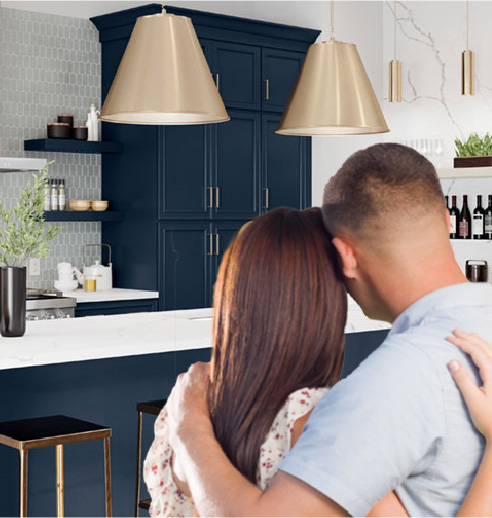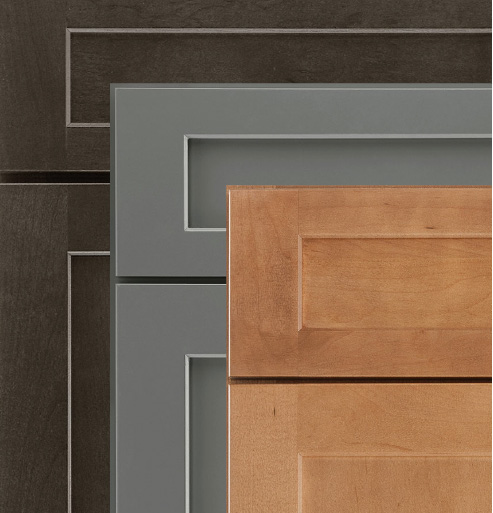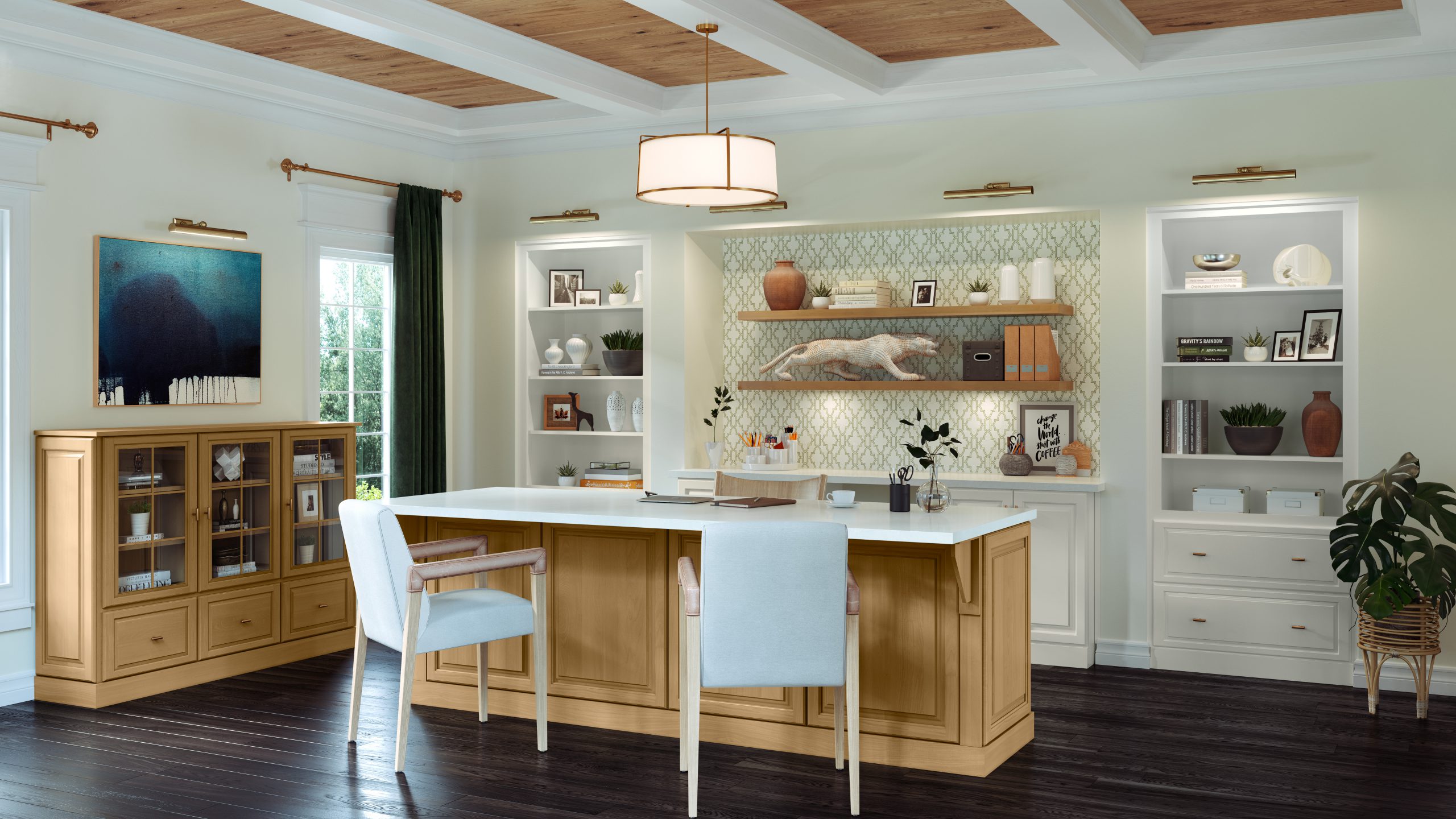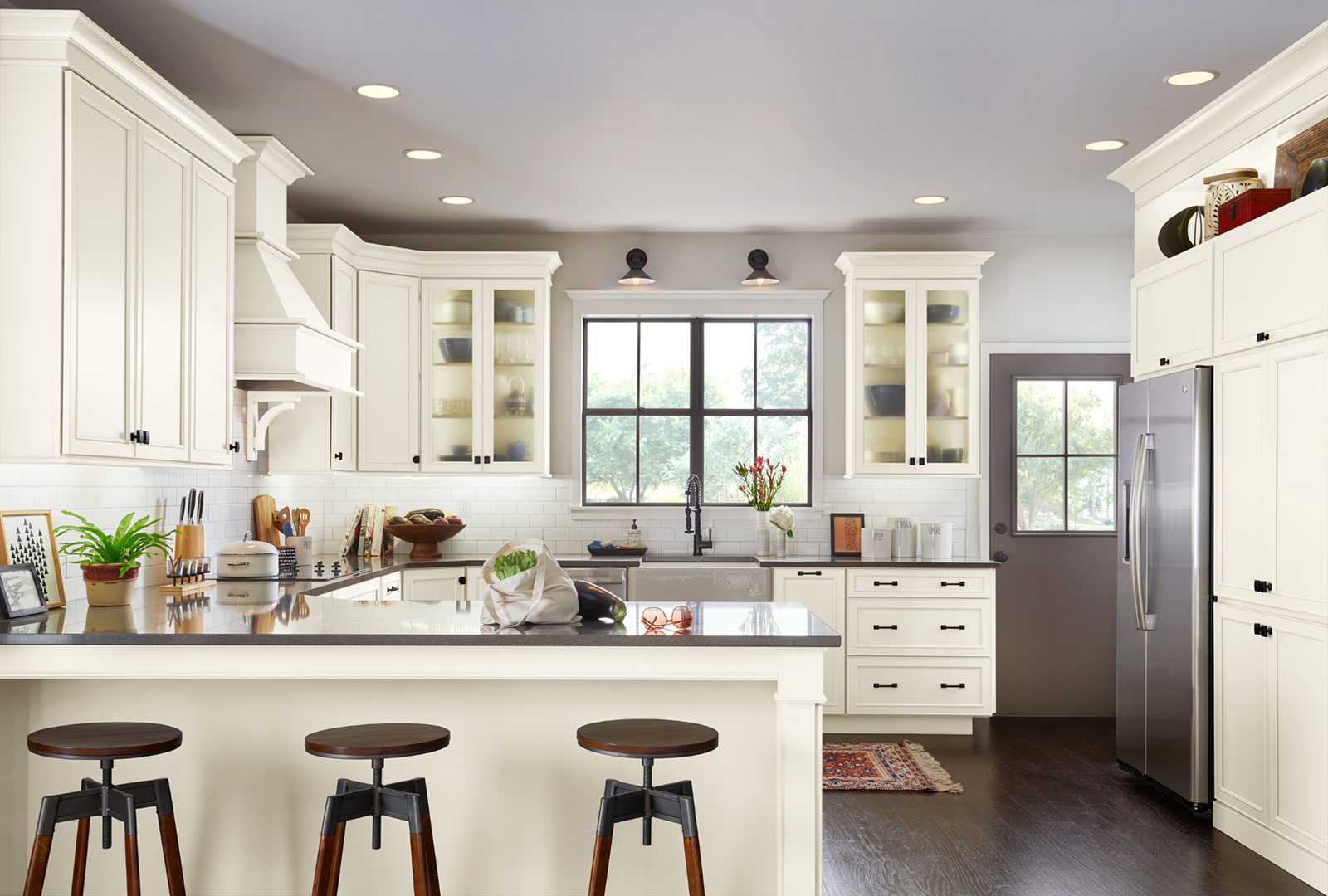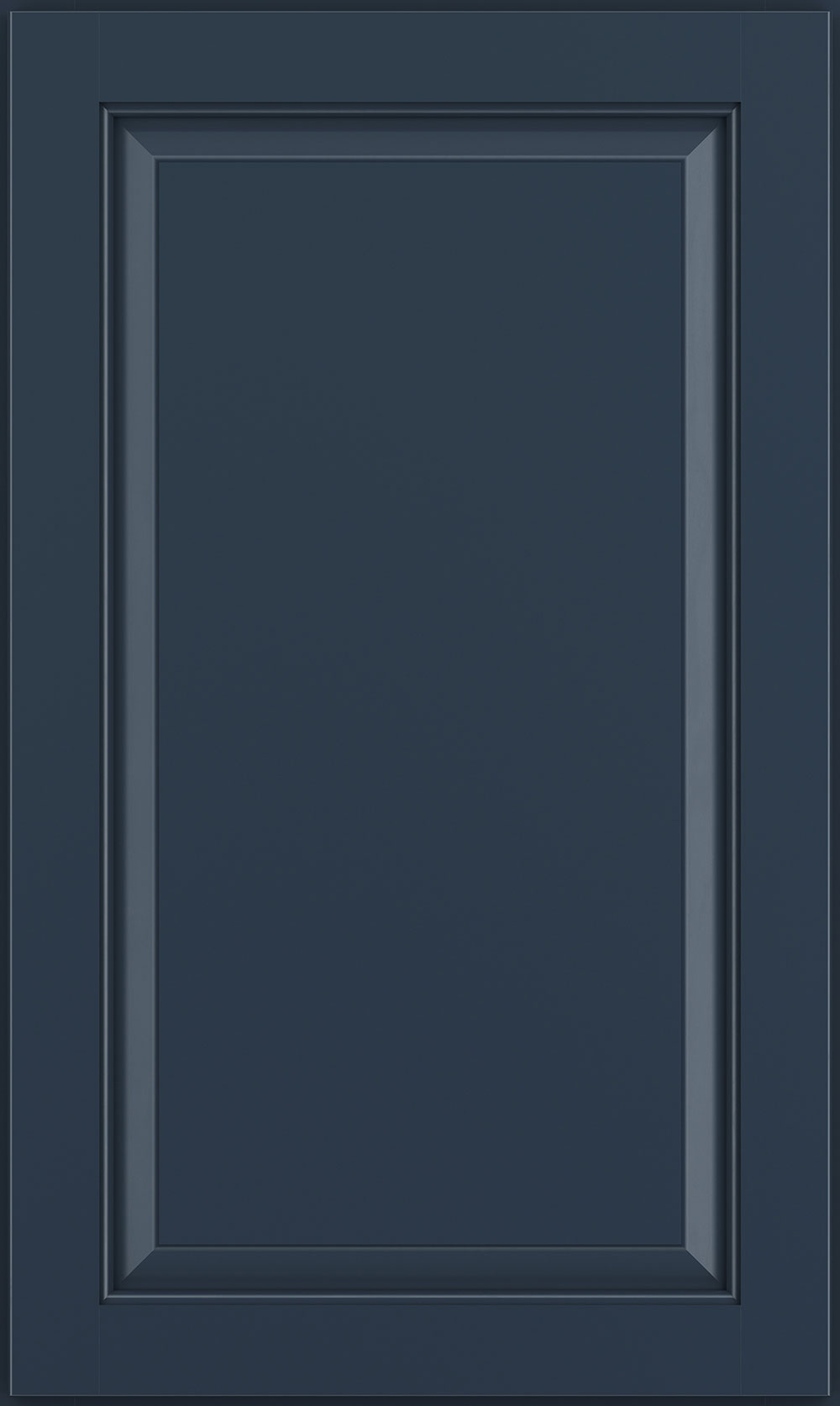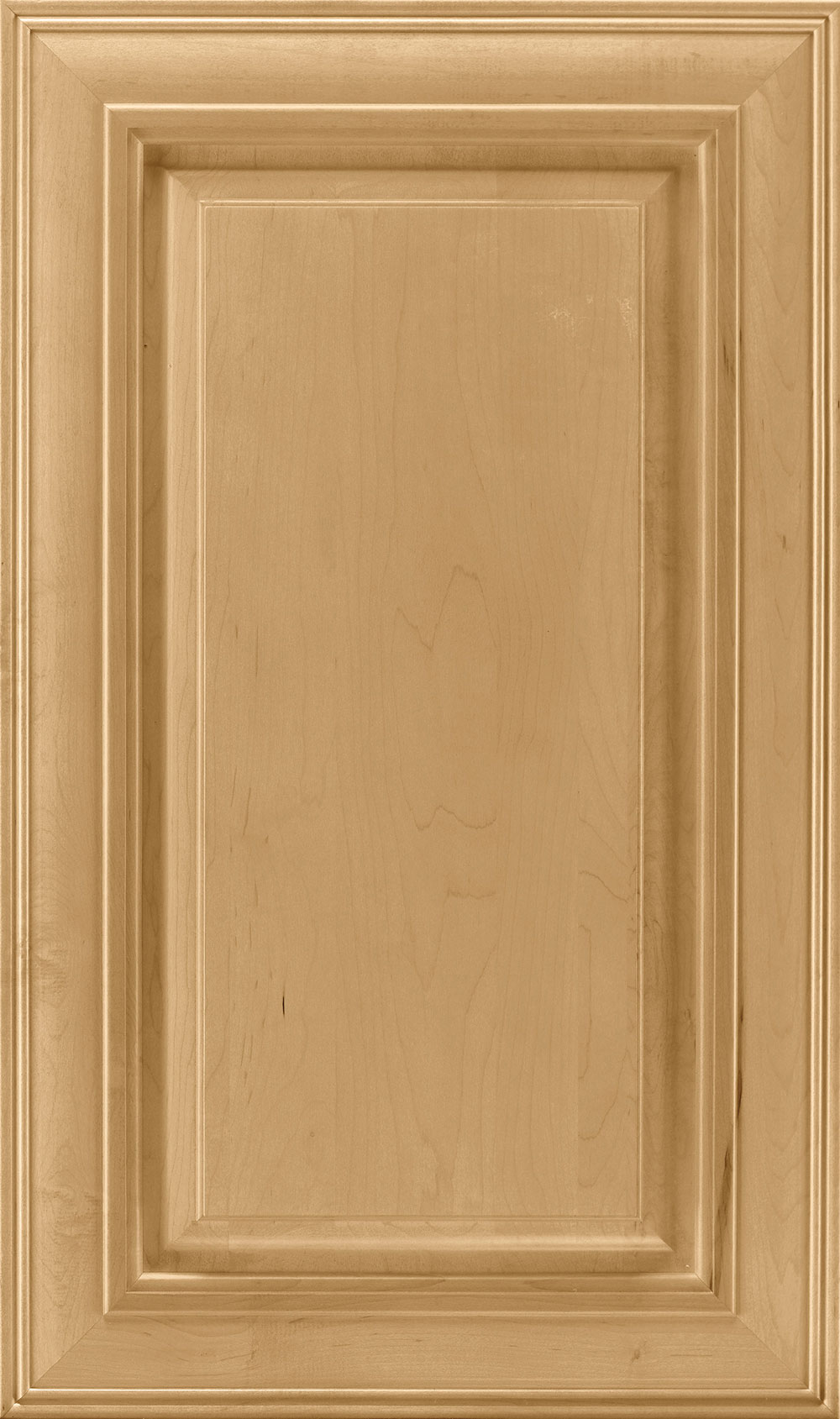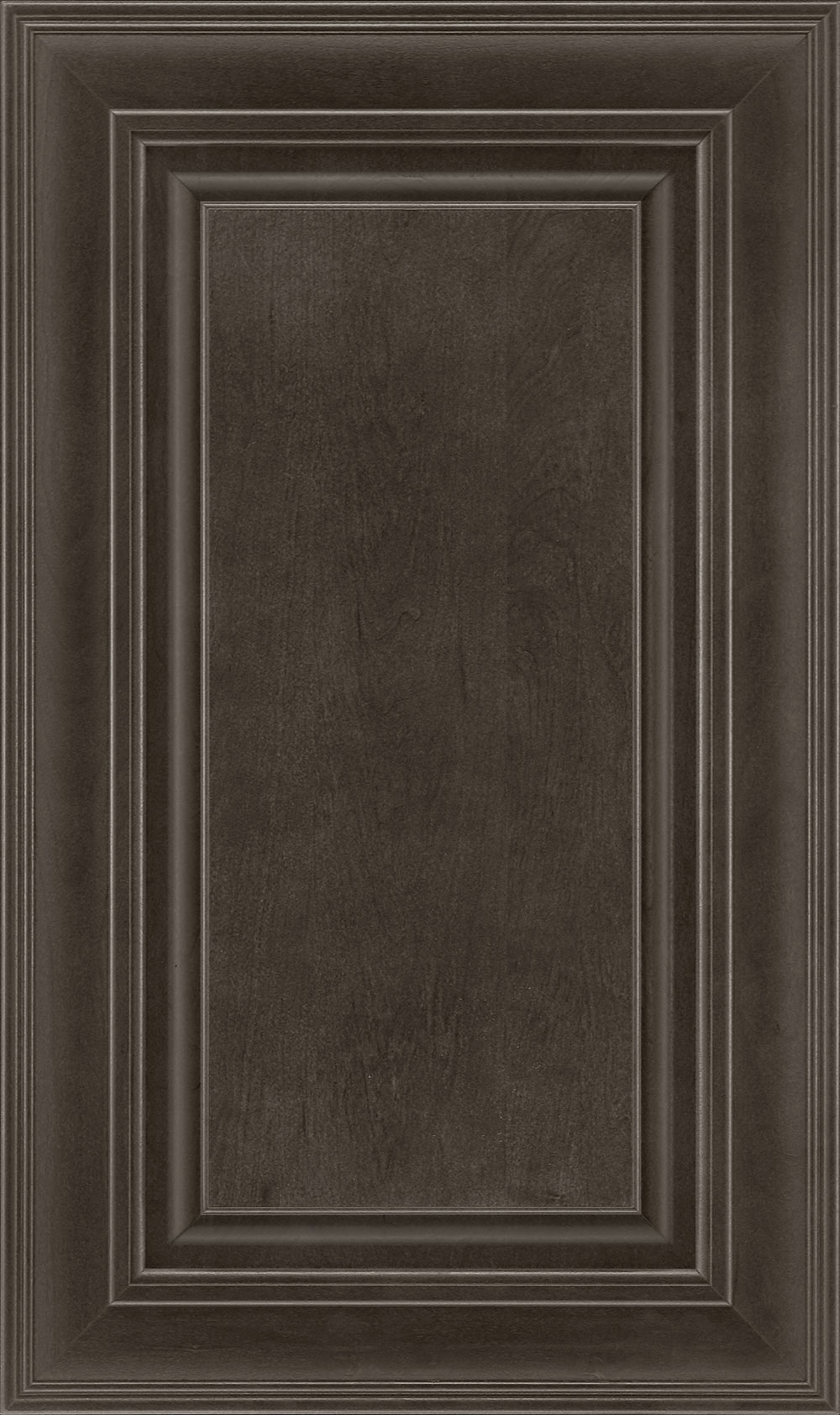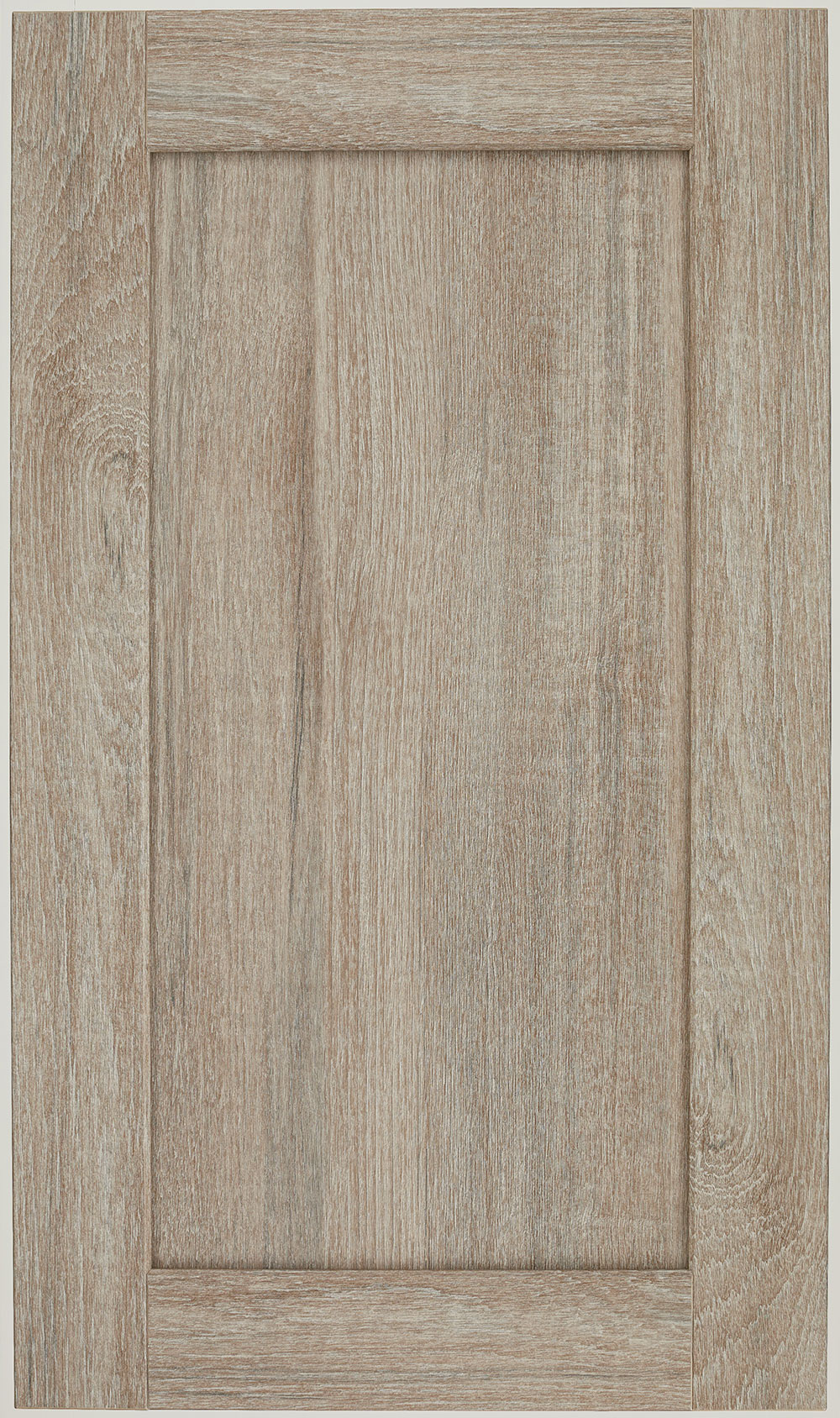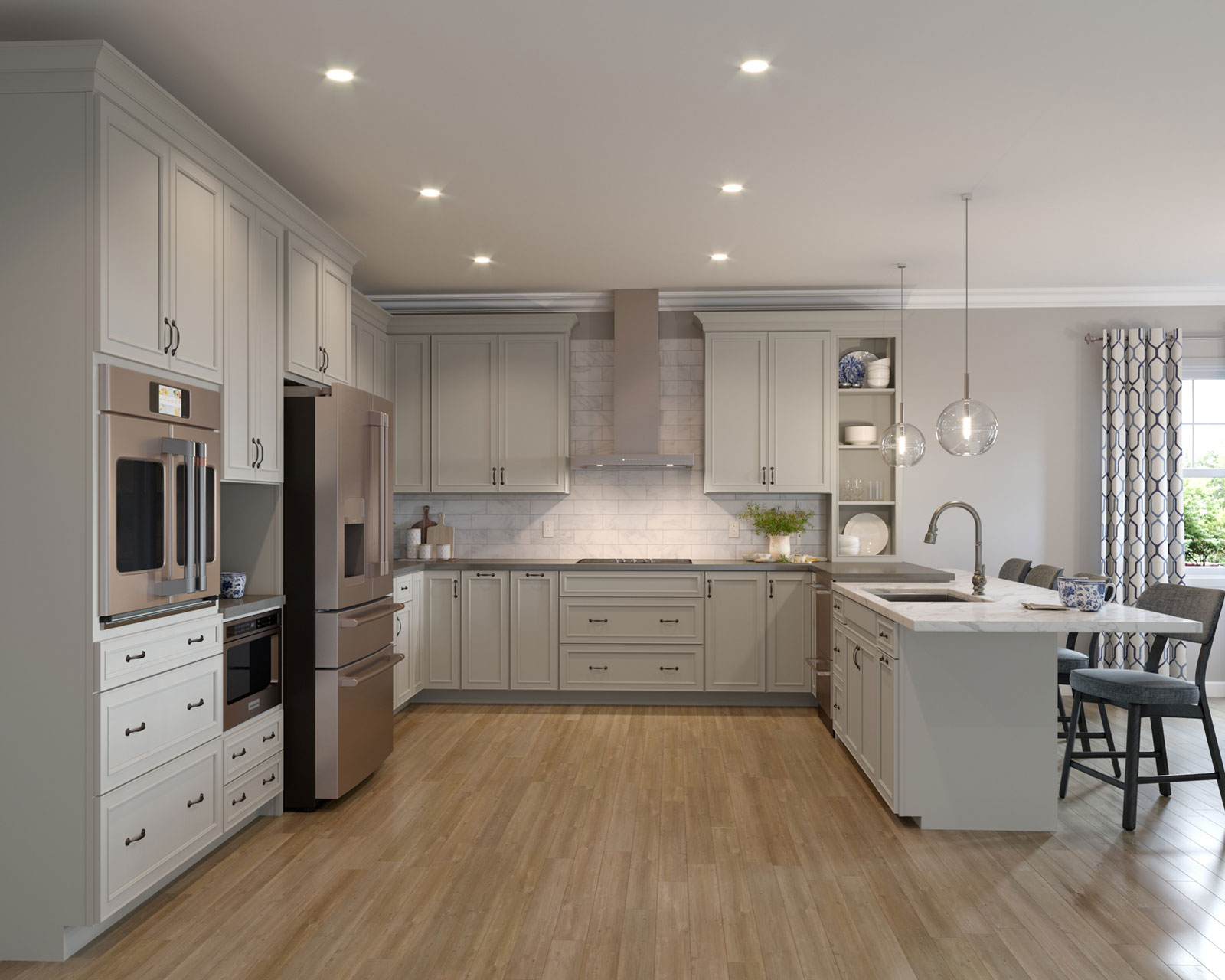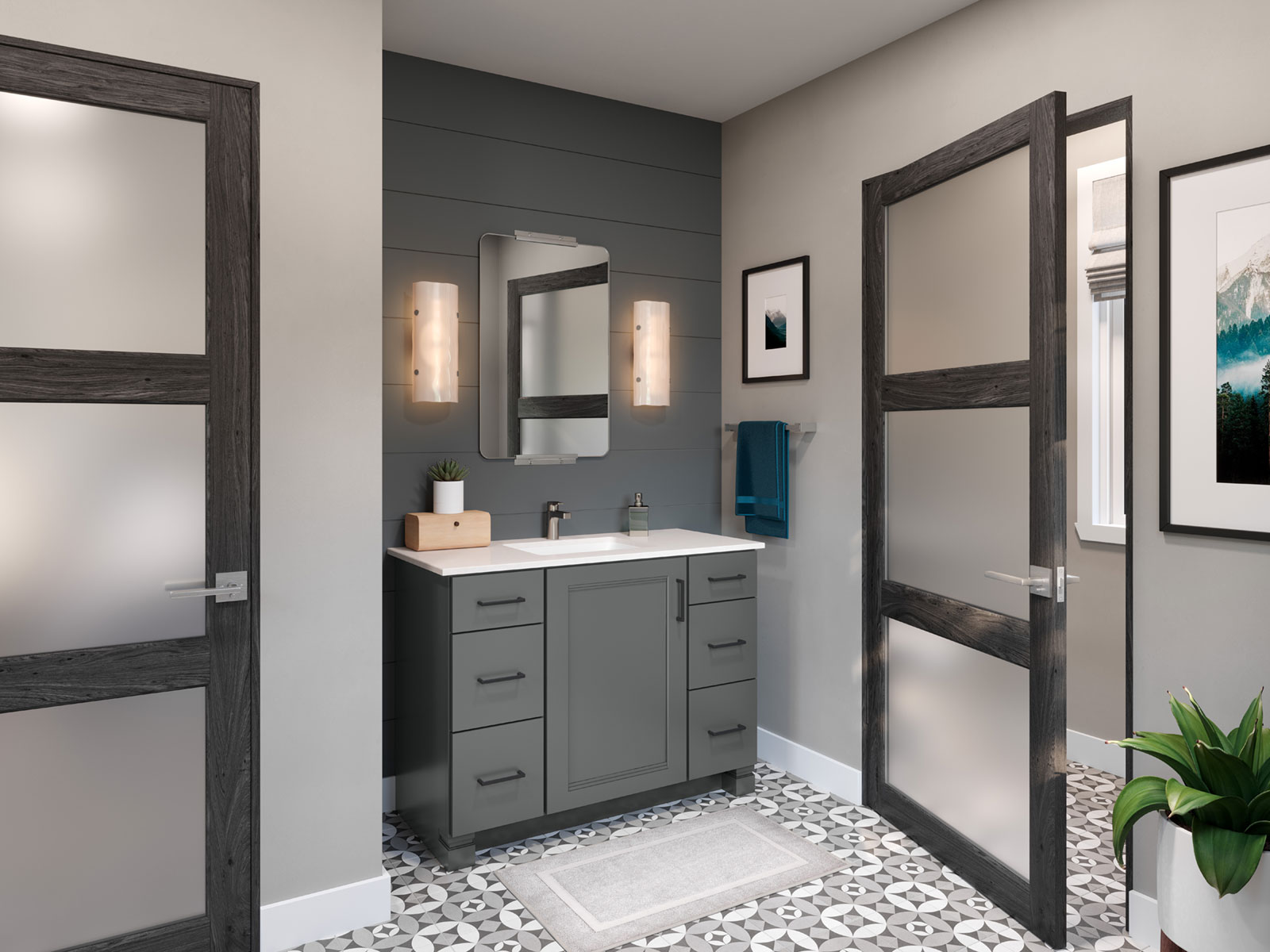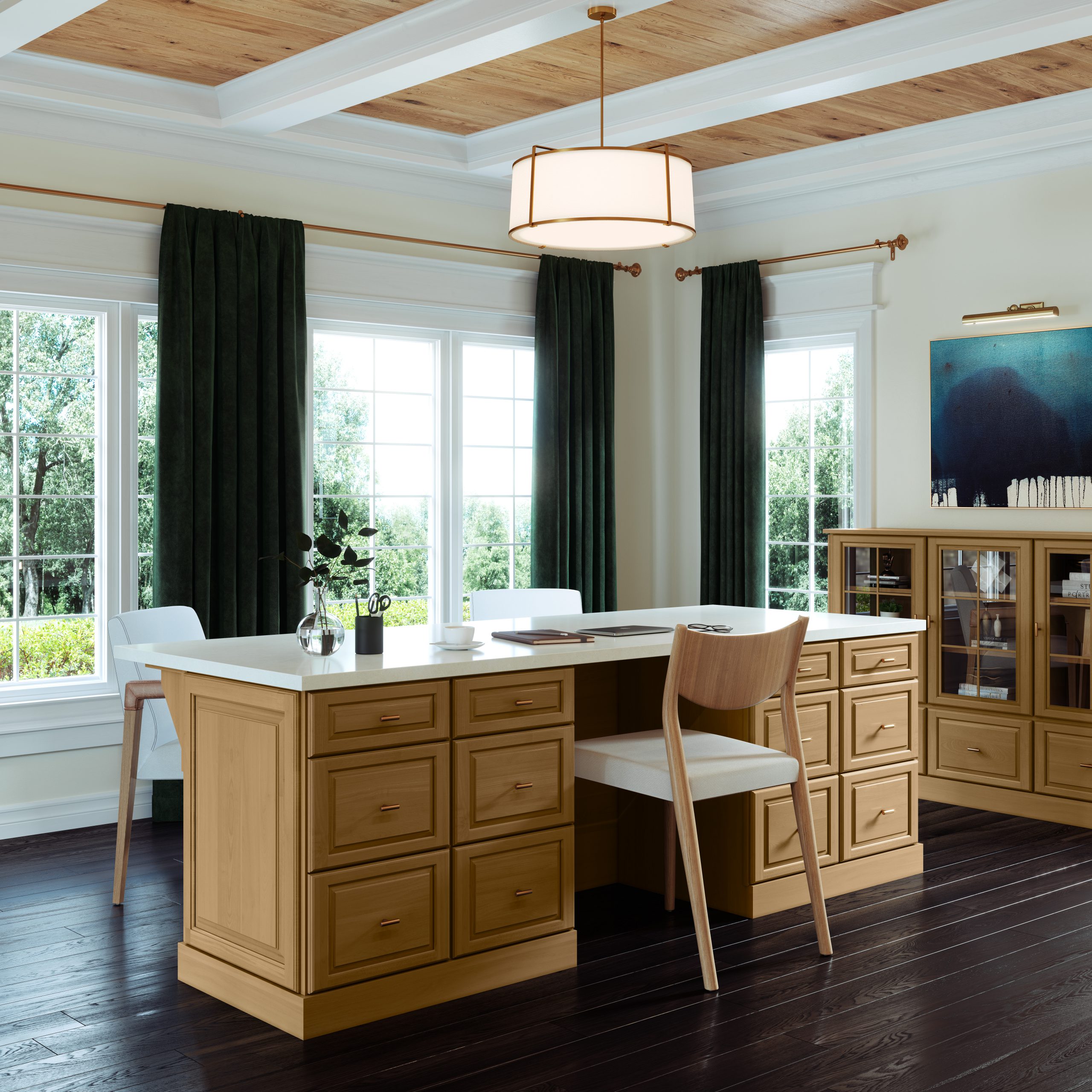Adjusting to a new normal inside the coronavirus pandemic means spending more time at home. Many of us are even working from home, at least part-time — a trend that is likely to continue far beyond the pandemic. “In the future, I think we are going to see a change in how many people work from home,” says Tracey Burrell-Combs, a Certified Kitchen and Bath Designer with Shenandoah.
Builders are keen to allocate space for a home office in new construction, but you can do the same a clever design and creative use of cabinetry.
Where to create your home office
“It’s all about carving out that little piece of square footage,” says Jennifer LeMarr, a Certified Kitchen and Bath Designer with American Woodmark. A home office nook in the kitchen can still work, but the kitchen office is less common now. These spaces can too easily get overrun with clutter. Plus, the nature of today’s work is different than a decade ago. “People on laptops and devices are more mobile now,” LeMarr says. “You need a space that will allow you to focus to minimize distractions.”
Look for a space where the door shuts, and where you can get at least 36 inches of dedicated workspace, Burrell-Combs advises. Ideally, you’ll also have plentiful access to power outlets, so if your phone dies just minutes before that important call, you don’t have to unplug something else to be able to charge it.
Consider the most creative way to use your home office space
To know how much space you need — a large tabletop surface versus a small, hidden fold down surface — consider how you work: Do you need easy access to paper documents and files? Do you prefer to spread out with sketchbooks, note pads, and reference books or are you a tidier worker? Do you have a need for multiple monitors?
Luckily, there are relatively simple ways to make attractive workspaces that are also ergonomic. For example, create a desk with ample drawer storage, and then form a seating area by placing fashion-forward decorative legs below the countertop overhang. “It’s all about how you use the building blocks,” LeMarr says.
Also, when situating your desk, think about incorporating as much natural light as you can. Claiming a space near a bright window can make you feel more energized. Look for ways to bring in greenery, LeMarr suggest. “It adds a breath of fresh air and a good break for your eyes.”
Clever ways to keep your home office organized
“Having an upper wall cabinet is important for storage,” Burrell-Combs says, because it keeps clutter out of view, but still creates easy access. That matters from an ergonomics point of view. You don’t want to have to be moving constantly to access what you need to work, because it’s distracting and will interfere with your productivity.
If creativity and brainstorming is part of your daily routine, you might want to create spaces for assets like mood boards. With some simple customizing of traditional kitchen cabinetry, you can easily hide these elements — only bringing them out when you need. For example, hang a corkboard or whiteboard from inside a cabinet door. Other clever ideas: trick out the inside of a cabinet to create a family charging station, or use a pull-out utensil storage cabinet for pens, pencils, and other office supplies.
“Ideally, you want to have a mix of open and closed storage,” LeMarr says. In a multifunctional space, you don’t want a printer or other pieces of equipment being in open sight. One sneaky idea is to use an appliance garage to close them off. It’s a fresh and unexpected way to use kitchen cabinetry in a home office, and it blends seamlessly in with bookcases and other storage.
If you are visiting a Lowe’s store for home office design inspiration, make sure to connect with a Kitchen Cabinet Specialist for more creative ideas from Shenandoah.
